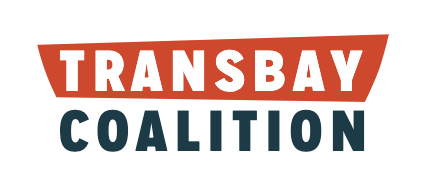East Palo Alto is in the process of updating the Ravenswood/4 Corners TOD Specific Plan. Recently, four significant development proposals within the plan area that total roughly 4 million square feet (MSF) have been submitted. This greatly exceeds the 1.2 MSF of the remaining development allowed in the existing, environmentally cleared plan.
Given that East Palo Alto hosts major levels of pass-through traffic via University Avenue- commute trips that pass through East Palo Alto and don’t start or end in the city – the community has significant traffic concerns. These concerns have led the council to explore a strong transportation demand management approach to the plan. The City Council held a study session on June 8, and will be returning to consider its next steps on September 28.
East Palo Alto City Council is exploring placing a trip-based cap on development, rather than the traditional measurements of square footage or floor-area-ratio (FAR). This shift in thinking is meant to more accurately bound development based on the direct negative impacts of vehicle trips, such as congestion, pollution, and traffic collisions.
The trip-capping scheme that East Palo Alto is considering will be based on trip reduction measures. These reduction measures range from changes that are easier to implement and more short term in nature, such as land use and parking policy changes and transportation demand management program implementation for new developments, to longer range programs such as bicycle infrastructure, transit-only lanes, and congestion pricing.
Some measures, such as land use changes – adding homes and services to a plan initially proposed mostly for office development – are intended to “internalize” trips – enabling people to meet their needs nearby without getting into a car.
A set of Transportation Demand Management measures to reduce vehicle trips include subsidized transit passes, car/van-sharing, bike share, parking maximums, and residential area parking permits.
Longer-term measures such as transit only lanes, congestion pricing, and better transit on the Dumbarton Corridor to convert demand from more environmentally harmful vehicle modes to more sustainable travel.
The consultant for the city identified congestion pricing as the measure with the greatest potential for trip reduction. This was also the most long-term measure, and would require state-level policy support.
At the June 8 study session, Mayor Carlos Romero was interested in the peak direction bus-only lane option for University Avenue, and asked if that project could be done in a 3-5 year timeline. The consultant responded that other jurisdictions working with Caltrans have ended up spending years on much more minor projects, and would classify 5 years as the minimum amount of time that would be required to implement a lane.
Councilmember Lopez expressed his desire for the city to be more vocal and productively engage on state level policies and support that would help the longer term projects, such as rail service, speeding implementation of bus lanes, and legalizing congestion pricing, recognizing that these types of improvements would have the greatest impact on trip reductions and helping reduce cut-through traffic in the city.
In discussion at the last council study session on June 8, the council discussed interest in seeing incentive programs to allow for desired uses such as local-serving retail not being subject to the trip cap, in order to incentivize these uses.
The council members were all mostly skeptical regarding the feasibility of a Cooley Landing ferry terminal site due to environmental concerns as well as concerns regarding the deed-restricted nature of the site.
The consultant’s report mentioned, but did not recommend adding roadway capacity as a strategy to reduce congestion. Mayor Romero and Vice Mayor Abrica noted that it will likely be difficult to implement roadway capacity improvements, such as a proposed loop road to divert pass-through traffic from University Avenue.
